Here is the little example of my two worksheets.
Original Sheet:

As you can see, this worksheet has two cells waiting to be recalculated at the later stage. (i.e. cells with red #Eval marker)
Result Sheet:

In the above Result sheet, we have got two results, Strawberry and Peach respectively. These two results are prepared for two #Eval cells and need to replace the #Eval marker.
Note that #Eval is actually returned by the UDF, indicating this cell needs to be recalculated. The recalculation will be initiated manually by clicking a button or something.
Also note that the position is mapped across two sheets -- if #Eval is located in Cell A3, then there will also be a result showing up in Cell A3 in the result sheet as well.
So, my primary goal here is to replace #Eval cell with its corresponding result. But I am having troubles with passing the results into my UDF -- I don't know how to programmatically get the reference / address of cell that is currently being recalculated.
Below is the code I have currently got, which I don't think it's been implemented correctly. Can anyone help? Or is there any other way to implement this?
Thanks in advance.
//assign value from result sheet back to result variable
private string getResultFromResultSheet(Excel.Worksheet originalSheet, Excel.Worksheet resultSheet)
{
string DataResult = null;
//Excel.Range resultSheetRange = resultSheet.UsedRange;
//string addresse = resultSheetRange.get_Address(Type.Missing, Type.Missing, Excel.XlReferenceStyle.xlA1, Type.Missing, Type.Missing);
Excel.Range originalSheetRange = originalSheet.UsedRange; //<= I think it's incorrect here
string os_currentAddress = originalSheetRange.get_Address(Type.Missing, Type.Missing, Excel.XlReferenceStyle.xlA1, Type.Missing, Type.Missing);
Excel.Range currentRRange = null;
currentRRange = resultSheet.get_Range(os_currentAddress, Type.Missing);
if (currentRRange != null)
{
DataResult = currentRRange.Text;
}
return DataResult;
}